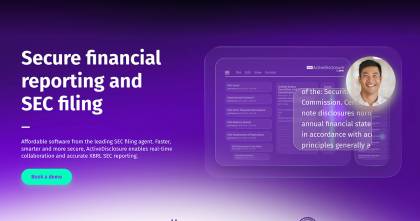EDGAR, which stands for Electronic Data Gathering, Analysis and Retrieval, is the Securities and Exchange Commission (SEC) filing system. If you've ever had to file an annual report or quarterly financial statement, you've interacted with EDGAR already. Brush up on what EDGAR does and how to use the system.
What Does EDGAR Do?
All public companies must use the EDGAR system when filing documents with the SEC.
Currently, the SEC only accepts submissions that are saved in HTML, ASCII (.txt) , XML, XBRL, file formats. PDF files are also accepted and are considered official for some form types.
The EDGAR system accepts filings from 6 am to 10 pm ET. For most form types EDGAR must receive submissions by 5:30 pm ET to be considered filed on that day. There are some forms that can be submitted by 10 pm ET and receive the same day’s filing date.
EDGAR deadlines vary by form type and filer status. For example, the Form 10-K is due 60 days from year-end for large accelerated filers and 90 days from year-end for non-accelerated filers. To stay apprised of filing deadlines companies find it helpful to keep a calendar with EDGAR filing deadlines for easy reference.
History of EDGAR
The Securities Act of 1933 requires publicly traded companies to file certain reports with the SEC, including quarterly statements, annual reports and other information.
The EDGAR system was launched in 1992 to facilitate online filings. Online filings have been mandatory since 1995. The EDGAR system is updated regularly by the SEC.
Using the EDGAR System
Before you can file documents in EDGAR, you must create an account. The account creation process includes a formal application. Once your application is processed, you will receive what is known as a Central Index Key (CIK) or CIK number. The CIK number is used to identify the person or entity making SEC filings.
Once you have official EDGAR access, you will need to prepare the documents using an accepted file format. Filers use various filing software like ActiveDisclosure to prepare, edit, proof, and collaborate their reports, and file using the EDGAR system.
A common use of the SEC EDGAR database is searching for documents that companies have filed.
SEC EDGAR database files are discoverable using the EDGAR advanced search function. Users can search over 20 years of EDGAR files for information on companies. A simple search allows you to input keywords and filter results by individual, company, location, date and other variables. The advanced search accepts Boolean operators (such as “and”), CIK number, company ticker symbol and other complex search features.
Benefits of the SEC EDGAR Database
There are many benefits to using SEC EDGAR:
- Single public company data repository: When researching companies, such as the due diligence process, it helps to have one central place to go to that contains more than 20 years of records. Users can search for current or historical information. Documents that are older than the 20-year-time span can be accessed by Freedom of Information Act (FOIA) request, although receipt of the documents is not instantaneous.
- Electronic access: Electronic access means you can access sec.gov at any time.
- Advanced search: The advanced search feature provides full text search capability for all EDGAR filings from 2001 to present day. This makes historical information much more discoverable than the previous search function.
- Trustworthy nature: Because EDGAR is the official and trusted database of the SEC, it is trustworthy and unbiased. EDGAR does not give preference to any one company or niche of companies. It's the same database and same filing process for all required filers.
This guide to EDGAR resources help you understand the filing system's requirements, history, and usage for filing and discovery. Knowing how EDGAR works makes it easier to keep up with all aspects of the filing process, from document preparation to meeting SEC filing deadlines.

